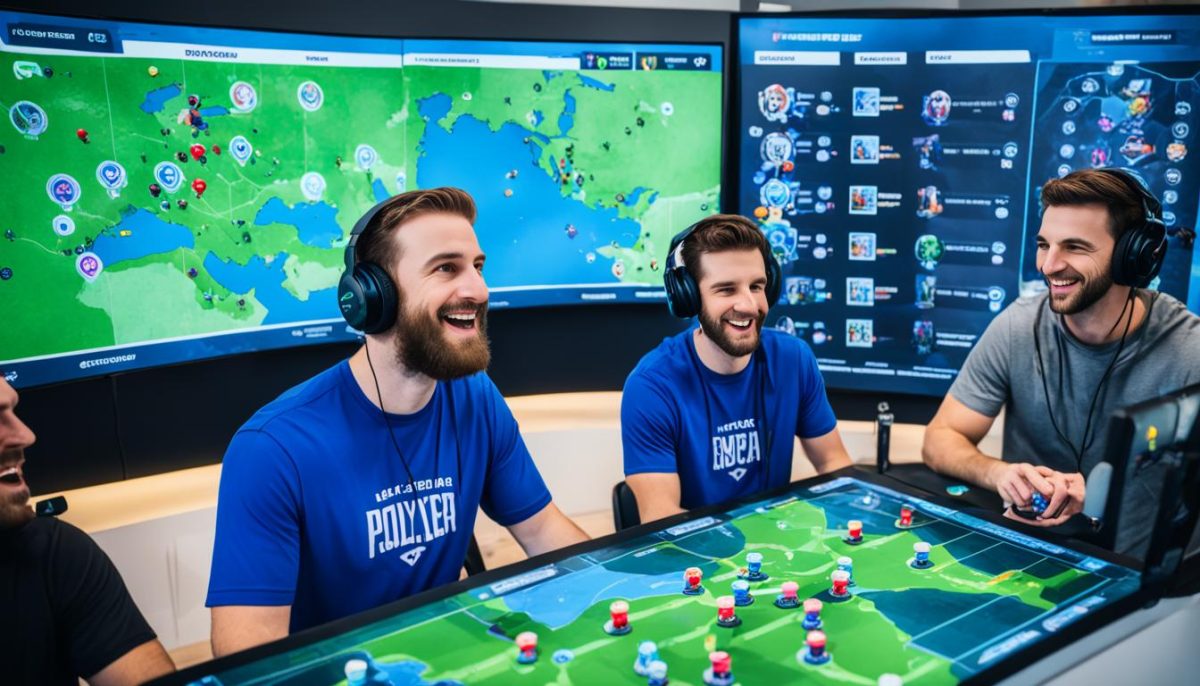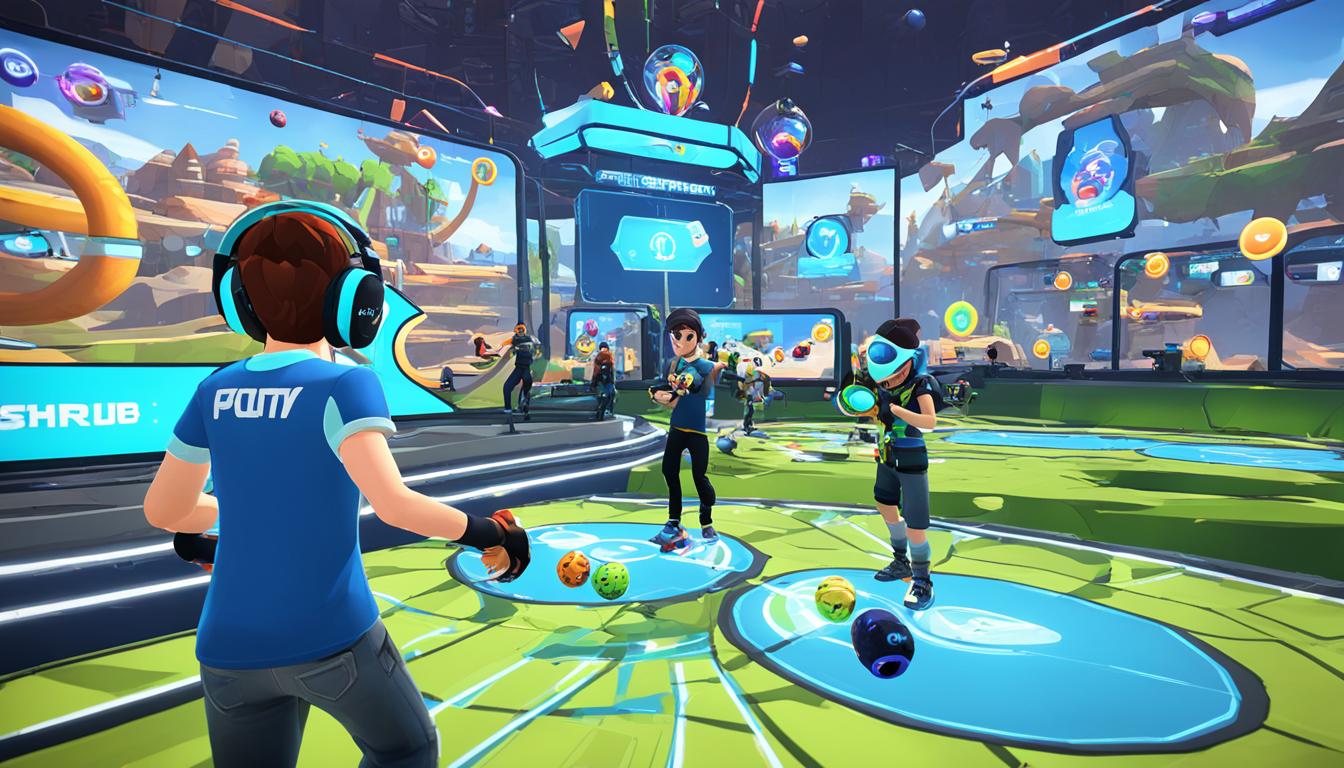Welcome to our guide on creating a multiplayer game using Unity! If you’ve ever dreamed of bringing people together through an immersive gaming experience, this is the perfect place to start. Unity, a popular game development engine, offers powerful tools and features that enable you to build your own multiplayer game from scratch.
In this section, we will dive into the essential steps and techniques that will help you kickstart your own multiplayer gaming project. Whether you’re a seasoned game developer or a beginner, Unity provides a user-friendly interface and a vast range of resources to support your journey.
Before we begin, let’s quickly recap what a multiplayer game is. Unlike single-player games, multiplayer games allow multiple players to interact with each other in a shared virtual environment. This social aspect enhances the gaming experience, creating excitement and challenges that go beyond what a single player can achieve.
As we progress through this guide, we will cover not only the basics of Unity for multiplayer games but also the implementation of multiplayer features, optimization techniques, and testing methods. By the end, you’ll have a solid foundation for building captivating multiplayer games that can be enjoyed by players around the world.
When it comes to creating multiplayer games in Unity, having a strong foundation in the basics is crucial. Understanding the capabilities of Unity for multiplayer functionality allows you to develop successful and engaging gaming experiences. In this section, we will explore the fundamental concepts of Unity that are essential for creating multiplayer games.
The Unity Engine
Unity is a powerful game development engine that provides developers with a wide range of tools and features for building games. It offers a user-friendly interface, a vast asset store, and excellent documentation, making it an ideal choice for aspiring game developers.
With Unity, you can create games for various platforms, including PC, console, mobile, and even virtual reality. Its versatility and cross-platform compatibility make it a popular choice in the game development community.
Multiplayer Networking
In multiplayer games, networking plays a crucial role in enabling players to interact and compete with each other in real-time. Unity offers several networking options, including Unity Networking, Photon Unity Networking (PUN), and Mirror. These networking solutions provide the framework for establishing connections between players, synchronizing game states, and enabling seamless multiplayer experiences.
Unity Networking, the built-in networking solution in Unity, is a straightforward and beginner-friendly option. It allows you to build multiplayer games using a client-server architecture, where one player hosts the game session as the server, and other players connect to it as clients.
Photon Unity Networking (PUN) is a popular third-party networking solution that offers a more robust and scalable multiplayer framework. It provides features like matchmaking, room creation, and synchronization of player movements and actions.
Mirror is another open-source networking framework for Unity, designed to be a modern and flexible alternative to Unity Networking. It offers a high level of control and customization, making it suitable for more complex multiplayer game projects.
Game State Synchronization
One of the key challenges in multiplayer game development is synchronizing the game state across all connected players. The game state includes variables like player positions, health, and scores, which need to be updated in real-time to maintain a consistent gameplay experience.
Unity provides various synchronization techniques, such as network transforms and remote procedure calls (RPCs), to ensure that game state changes are replicated accurately across all clients. By using these techniques effectively, you can create a seamless and immersive multiplayer environment.
Player Interactions and Input Handling
In multiplayer games, enabling players to interact with each other and the game world is essential. Unity provides input handling systems that allow you to capture and process player input, ensuring that actions performed by one player are properly communicated to others.
By understanding the basics of Unity’s input handling and implementing multiplayer-specific input mechanics, such as predicting and compensating for network latency, you can create responsive and enjoyable multiplayer experiences.
Implementing Multiplayer Features in Unity
Now that you have a solid grasp of the basics, it’s time to take your game development to the next level by implementing multiplayer features in Unity. By adding multiplayer functionality, you can create immersive experiences that allow players to connect, compete, and collaborate with friends and fellow gamers from around the world.
One of the first steps in implementing multiplayer features is setting up network synchronization. This ensures that all players see the same game state and updates in real-time. Unity provides powerful networking capabilities that allow you to establish a reliable connection between players and handle data transmission seamlessly.
When designing multiplayer games, player interactions play a crucial role in keeping the gameplay engaging and dynamic. Whether it’s team-based cooperation or intense competitive battles, Unity offers a variety of tools and APIs to facilitate smooth player interactions. You can enable communication between players, implement chat systems, create leaderboards, and much more.
To enhance the multiplayer experience, it’s important to consider creating game modes specifically tailored to a multiplayer environment. Unity provides flexible systems for creating different game modes, such as team-based matches, deathmatches, or cooperative missions. By designing game modes that encourage teamwork, competition, and strategic thinking, you can captivate players and keep them coming back for more.
Implementing multiplayer features in Unity also requires efficient matchmaking and lobby systems. These systems allow players to find and join matches easily, create parties with their friends, and set up custom game settings. Unity’s multiplayer services and APIs simplify the process of managing matchmaking and lobby functionalities, saving you valuable development time.
To give you a better understanding, let’s take a closer look at an example of setting up multiplayer features in Unity:
Create a Lobby System
1. Define the lobby UI layout and functionality, including matchmaking options, chat, and player lists.
2. Implement the lobby script to handle player management, game settings, and matchmaking requests.
3. Utilize Unity’s networking APIs to establish connections between players and handle data synchronization.
4. Test the lobby system thoroughly to ensure seamless multiplayer experiences.
By following these steps and utilizing Unity’s robust multiplayer capabilities, you can create engaging and dynamic multiplayer games that will captivate players and elevate your game development skills.

| Benefits of Implementing Multiplayer Features |
|---|
| Enhanced player engagement through real-time interactions |
| Captivating cooperative and competitive gameplay experiences |
| Expanded player base by connecting gamers globally |
| Opportunities for socialization and community building |
Tips for Optimizing and Testing Your Multiplayer Game in Unity
Once you have completed the development of your multiplayer game using Unity, the next crucial step is to optimize and test it thoroughly. This ensures that your players have the best possible experience when they dive into your immersive gaming world.
Optimizing your multiplayer game is essential to enhance its performance and responsiveness. To achieve this, you can utilize various techniques such as minimizing network traffic, optimizing asset loading, and implementing efficient data synchronization strategies. By carefully optimizing these aspects, you can ensure smooth gameplay even in high-intensity multiplayer sessions.
However, optimization alone is not sufficient to guarantee a seamless experience. Rigorous testing is equally important. Through comprehensive testing, you can identify and fix any bugs, glitches, or compatibility issues that may arise in a multiplayer environment. This includes testing for network stability, stress testing under heavy player loads, and ensuring compatibility across different devices.
By following these valuable tips for optimizing and testing your multiplayer game, you can deliver a high-quality gaming experience that keeps players engaged and coming back for more. So, don’t overlook the importance of optimization and testing. Dedicate time and effort to refine your game, and watch as your multiplayer creation becomes a true online gaming sensation.


